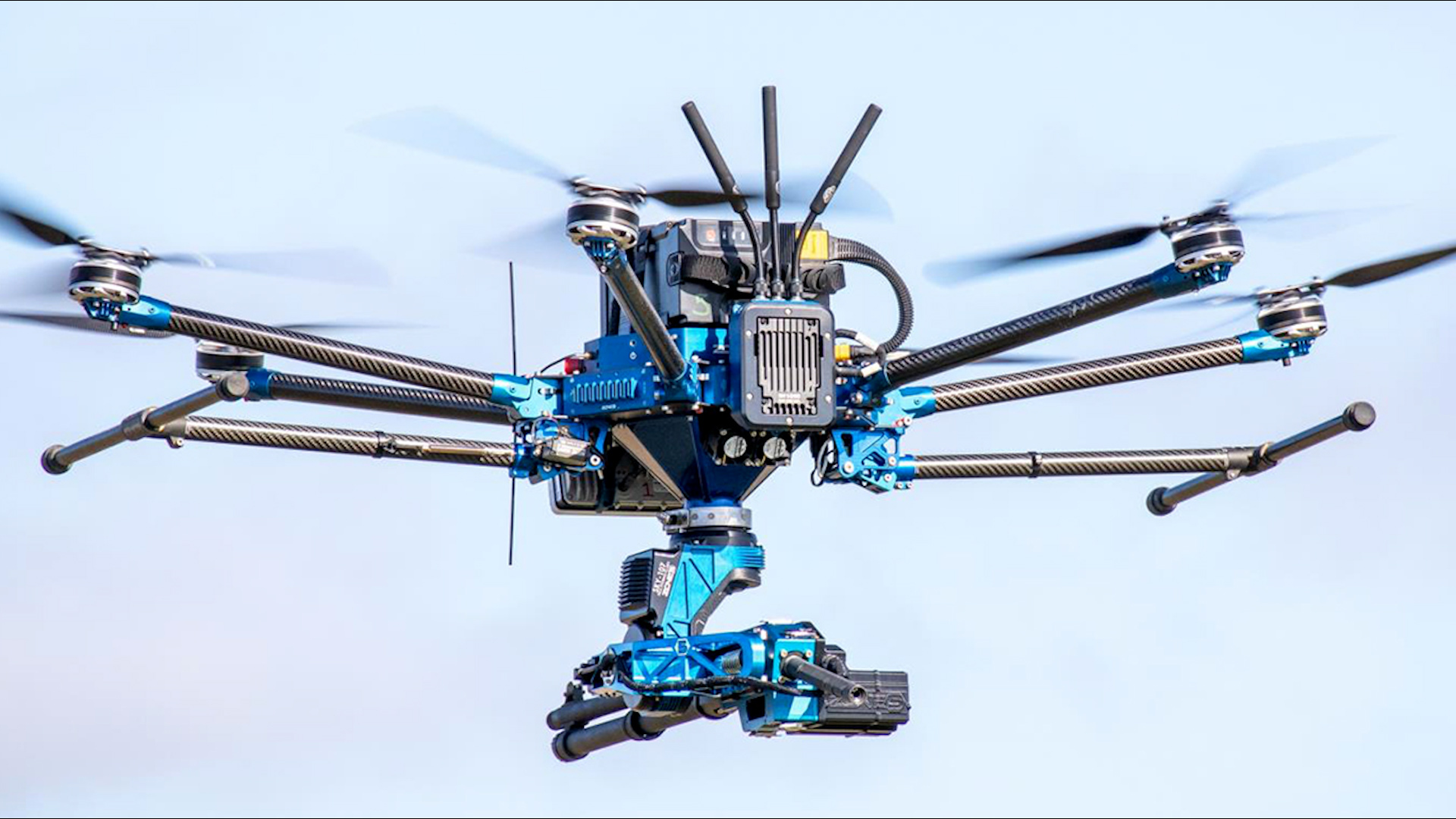
[RYAN ROBERTSON]
TIME NOW FOR OUR WEAPON OF THE WEEK, AND IT’S ANOTHER INNOVATION FROM THE FOLKS AT THE AIR FORCE RESEARCH LABORATORY.
MEET THE PALADIN MULTI-MISSION UNMANNED AIRCRAFT SYSTEM, ESSENTIALLY A DRONE INTERCEPTOR.
WHILE THERE ARE ALL KINDS OF DRONES, WITH ALL KINDS OF MISSIONS, THE PALADIN IS STILL PRETTY UNIQUE. IT’S LIKE DALTON FROM THE 80s CLASSIC ‘ROAD HOUSE, EXCEPT THE PALADIN IS THE BOUNCER OF DRONES.
[FROM ROAD HOUSE]
“I want you to be nice until it’s time to not be nice.”
[RYAN ROBERTSON]
THIS HEX-ROTOR WATCHDOG IS WHAT THE AIR FORCE WANTS TO MAKE SURE THEIR MANNED AIRCRAFT SYSTEMS DON’T RUN INTO ANY UNEXPECTED BOGEYS. ESPECIALLY IN AREAS WITH LARGE POPULATIONS LIVING AROUND THE BASE. THINK NELLIS AIR FORCE BASE IN LAS VEGAS—OR LANGLEY AIR FORCE BASE IN VIRGINIA.
[Brendon Poland]
“We’re not going after anything big. And generally, everything’s either commercial or it’s how assembled by hobbyists, you know, operating, you know, in the national airspace.”
[RYAN ROBERTSON]
DESCRIBED AS A FULLY AUTONOMOUS WINGMAN, THE PALADIN COMES EQUIPPED WITH A UAS DETECTOR AND A LOUDSPEAKER FOR INCIDENTS WHERE A VERBAL WARNING WILL WORK. BUT IT ALSO PACKS A PUNCH IF NEEDED. ARMED WITH A BENELLI M-4 SHOTGUN, THE OPERATOR HAS A DISTINCT ADVANTAGE OVER STUBBORN INTRUDERS.
[Brendon Poland]
“It’s a net round, that’s very safe, and so employed in the air, it only has an effective range of about 20 meters.”
“The system isn’t just going to go out and shoot down a drone and it falls wherever. The system will go out, follow an aircraft, identify what it is, we’ll try to mitigate it in other ways. Get over an area where there’s no people below it. And then if we have to engage we can engage in those safe areas where if it drops to the ground, it’s not going to hurt anybody.”
[RYAN ROBERTSON]
AS FOR WHEN THE PALADIN WILL BE PUT TO WORK ON AIR FORCE BASES AROUND THE U.S., AFRL SAYS IT’S IN LATE-STAGE DEVELOPMENT AND WILL BE GOING THROUGH AN OPERATIONAL ASSESSMENT DURING FISCAL YEAR 2025. AFTER THAT, PLANS FOR DELIVERY AND IMPLEMENTATION WILL BE MADE.






